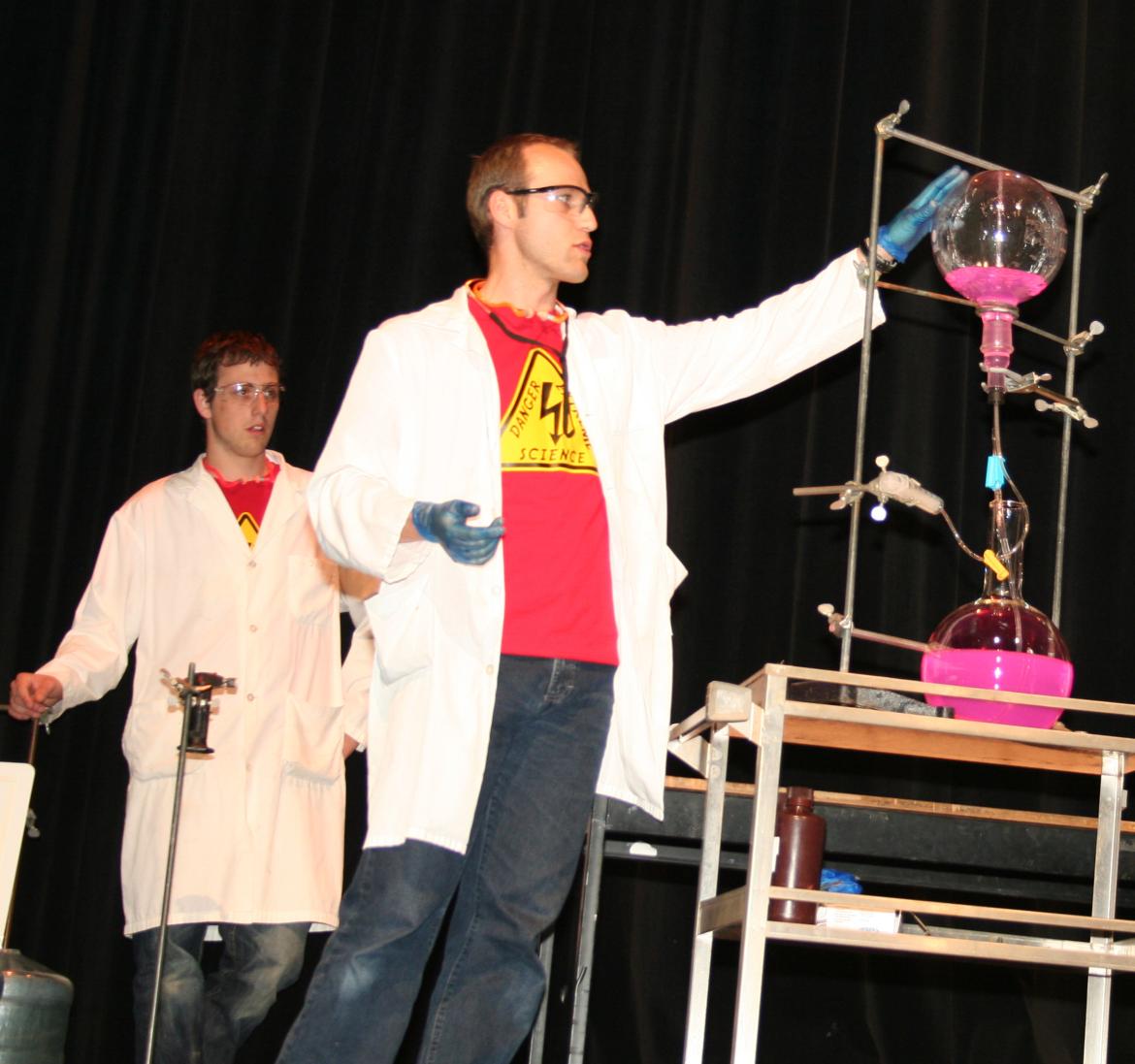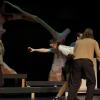
May 2, 2013 - 4:25am
Explosions, implosions, flying arrows, fire, lightning and illusions – these are some of the exciting things you’ll see at the fifth annual Extreme Science show this year.
The startling and occasionally loud science demonstration will entertain more than 1,200 school students in four shows in Nanaimo May 14 to 17, and one in Duncan May 23.
An evening show open to the public takes place May 16 in the Malaspina Theatre at VIU’s Nanaimo campus at 7 pm. Tickets are $10 each and available from Kool&Child (#102-2517 Bowen Road, Nanaimo).
“It’s going to be a fun, entertaining hour of extreme science for a worthwhile cause,” says VIU Physics professor Dr. Ray Penner, who stars in the show with faculty from the physics and chemistry departments and two students.
Extreme Science is a popular spring fundraiser for LED Africa, a charity started by Penner in 2008. The organization aims to provide solar-powered lighting systems and other assistance to rural secondary schools in Malawi, Africa. Penner developed a connection with Malawi when he taught there 20 years ago.
“Many of the rural secondary schools in Malawi have evening study sessions where they use kerosene lighting,” he says. “These sessions are typically sporadic both because of the cost and the limited availability of kerosene. In addition, the smoke from the kerosene lanterns causes health concerns.”
Penner and his colleagues from the University of Malawi set up a test system at a school using energy efficient LED lights powered by a solar panel on the roof. The total power required for a 50-student classroom is about 40 watts, which keeps expenses low.
After a positive response from the test school, Penner created the LED Africa charity. Lighting systems were installed in classrooms at three schools in 2009.
Since then a total of 17 schools have received the lighting system with the help of technicians from the University of Malawi. The cost to set up a classroom is $1,200, with two classroom systems being installed at each school.
The single solar panel, the battery, and cables which are required for each classroom are purchased from suppliers within Malawi. The battery box, which holds the battery and the controls, as well as the stands for the LED lanterns are built by local Malawian carpenters. The lanterns are all assembled by Malawians.
“The key for me is that the system is built by Malawians and maintained by Malawians,” says Penner. “The annual cost of running this lighting is less than what the schools pay for kerosene and therefore the schools can cover all the future maintenance costs. It’s a long-term system.”
This year the money raised by ticket sales is going towards buying textbooks for rural secondary schools.
“These schools typically have very few textbooks. Having an adequate number of textbooks along with the lighting systems is a combination that should lead to success for the students,” says Penner.
Penner adds the Extreme Science show is a lot of fun for VIU faculty because “it’s rewarding to get kids excited about science.
“It goes the other way too,” he says. “The response from the kids certainly keeps us ‘extreme scientists’ excited about putting on the show.”
For questions about Extreme Science email: extreme.science@viu.ca.
For more information on the Malawi project, visit: www.LEDafrica.org.
-30-
ABOUT VIU: Vancouver Island University is Canada’s west coast university. Known as a centre of excellence for teaching, learning and applied research, VIU offers a diverse range of certificate, diploma and undergraduate and master degree programs to more than 18,000 students on campuses in Nanaimo, Powell River and Cowichan, and at the Parksville-Qualicum Centre. For more information visit www.viu.ca
Media Contact
Janina Stajic, Manager, Vancouver Island University
P: 250.740.6288 E: Communications@viu.ca Twitter: @VIUNews
Tags: In the Community






